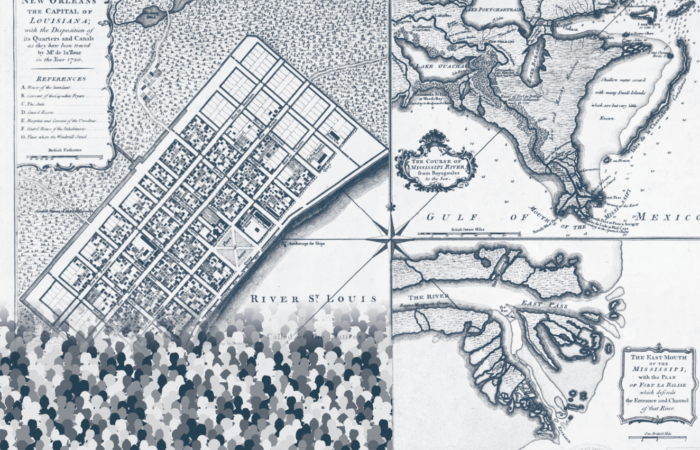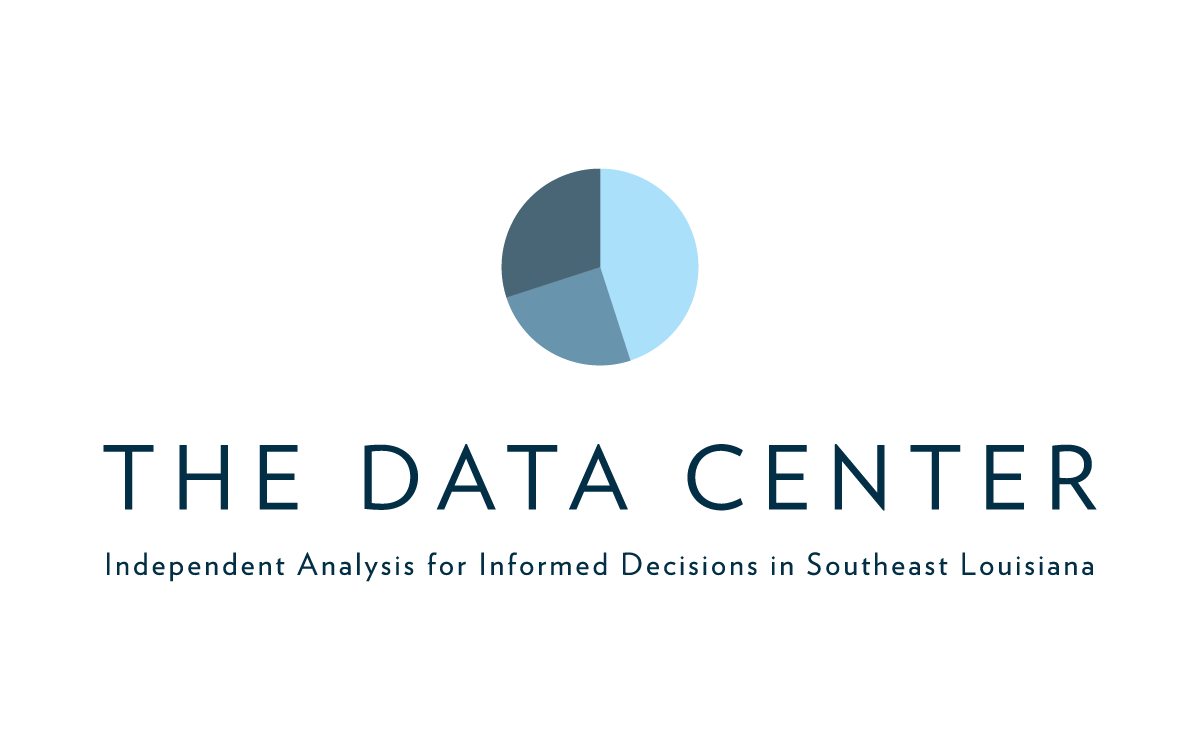
Placing Prosperity: Neighborhoods and Life Expectancy in the New Orleans Metro
Published: Aug 13, 2020
Introduction
There has been an intense spotlight on the links between systemic inequities, racial disparities in COVID-19 cases and deaths, and disproportionate impacts on low-income people and communities of color. These patterns, of course, long predate the pandemic. In the New Orleans metro area, the fact that people’s chances to experience a long, healthy, and prosperous life are often implied by their neighborhood reflects enduring legacies of residential segregation and economic exclusion. Perhaps nowhere is this more evident than in the sharp gaps in life expectancy that separate neighborhoods, whether from one end of the 8-parish region to the other or from just a few miles down the road.
Taking data on life expectancy at the neighborhood level as a "snapshot" of pre-pandemic health inequality, this three-part series of data briefs explores the causes and consequences of neighborhood differences in health and well-being over the life course. The analysis reveals how an uneven landscape of investment and socioeconomic opportunity shapes life expectancy, and shows that neighborhood inequality remains inextricable from racial inequality. Understanding the persistent links between health, economic opportunity, race, and place can help to inform the evolving COVID-19 response and, eventually, to propel a more equitable recovery.
With neighborhood life expectancy serving as the starting point and common thread, each of the three chapters dives into a different aspect of place-based inequality.
- Chapter 1 shows gaps in life expectancy varies across neighborhoods in the New Orleans metro and puts these gaps into context. The chapter examines how mortality patterns and racial health disparities relate to life expectancy, how neighborhood conditions can impact life expectancy, and how neighborhood inequality affects all neighborhoods across the region.
- Chapter 2 examines the historical roots of today’s neighborhood inequalities. The city’s long history of racial segregation continues to shape neighborhood inequalities today. Neighborhood-level data going back to 1970 shows how patterns of neighborhood inequality in New Orleans have and haven’t changed since the Civil Rights era.
- Chapter 3 discusses the implications for promoting long, healthy lives and inclusive economic opportunity across the region. The chapter engages with the long-standing but troubled distinction between “people prosperity” and “place prosperity” in policy, practice, and research.
Executive Summary
Placing Prosperity explores neighborhood inequality in New Orleans and across the 8-parish metro. Taking data on life expectancy at the neighborhood level as a focal point, the report explores the underlying patterns behind differences in neighborhood health and well-being, economic opportunity, and quality of life. Like numerous national studies, our analysis demonstrates that dramatic geographic differences in life expectancy are closely related to socioeconomic opportunity. Moreover, place-based inequality remains inextricable from racial inequality. While the data reflects conditions before COVID-19, the findings help to explain the uneven health and economic effects of the pandemic — and provide context for stakeholders looking to imagine a more equitable recovery.
Life expectancies vary dramatically across the New Orleans metro, sometimes even over the span of a few short miles. Why are there such large differences in life expectancy across neighborhoods in our region? Building on leading public health, social sciences, and economics research, the report examines mortality trends and their relationship to neighborhood conditions, the history of neighborhood inequality in the New Orleans metro area, and the implications for place-conscious, cross-sectoral approaches to reducing neighborhood inequality.
The analysis foregrounds patterns of inequality across neighborhoods rather than conditions in any single neighborhood. Here are some of the main findings:
National and local life expectancy and mortality trends
- Gains in life expectancy have stagnated in the United States. At both the national and local levels, deaths from external causes – including so-called “deaths of despair” – have increased while deaths due to chronic illnesses have decreased. Mortality rates for children, youth, and the elderly have declined, but mid-life mortality rates have increased
- All-cause mortality remains higher in the New Orleans metro than in the nation as a whole, although this gap has closed considerably since the early 2000s. Mortality rates have fallen in many urban areas, including New Orleans. While life expectancy has stagnated at the national level, life expectancy and mortality trends may play out differently at the state, county/parish, and neighborhood levels.
Racial disparities in mortality and life expectancy
- For every age group, black mortality rates remain higher than white mortality rates. However, for some age groups, racial disparities in mortality have narrowed since 2000.
- Across the nation and within essentially every metro area, life expectancies in majority-black neighborhoods vary but are, on average, lower than in other neighborhoods. Nationally, the average life expectancy of majority-black neighborhoods is 4.6 years lower than the average of all other neighborhoods.
- A relatively high fraction of New Orleans metro neighborhoods are majority-black, and life expectancies in these neighborhoods are 3.8 years lower on average than in other metro area neighborhoods.
Gaps in life expectancy across metros and within metros
- In the 8-parish New Orleans metro, residents in the 20 percent of neighborhoods with the highest life expectancies have an average life expectancy over 82 years. Residents in the 20 percent of neighborhoods with the lowest life expectancies have an average life expectancy less than 71 years. The city of New Orleans has especially striking gaps in life expectancy over short distances.
- Average life expectancy in the New Orleans metro is 76.6. This is lower than the national average life expectancy and is also among the lowest handful of all metros with a population greater than one million.
- Metros with smaller gaps between neighborhoods with the highest and lowest life expectancies tend to have longer average life expectancies at the metro level. Even neighborhoods with relatively high life expectancies (in the 80th percentile) in the New Orleans metro have life expectancies comparable to only the mid-range of neighborhoods in metros with the smallest gaps in life expectancy.
Neighborhood conditions and durable inequality
- Indicators of socioeconomic opportunity, such as income, education, and intergenerational income mobility, are correlated with life expectancy at the neighborhood level.
- In the three decades between 1970 and 2000, neighborhood inequality changed relatively little, as measured by changing poverty rates. At the same time, as white flight reshuffled regional demographics, the racial composition of many New Orleans neighborhoods changed. Shifting investment and disinvestment due, in part, to federal and local policies during the middle of the 20th century, along with subsequent neighborhood demographic changes, wrapped neighborhood socioeconomic inequality into an increasingly tight relationship with neighborhood racial demographics.
- Since Hurricane Katrina and the levee failures displaced hundreds of thousands of residents and devastated neighborhoods, the pace of neighborhood change has quickened and the geography of uneven investment and neighborhood inequality has changed.
Conclusion
Neighborhood inequality is a longstanding issue, and the historical legacy of segregation and uneven investment continues to shape the disparate impacts of COVID-19 on low-income people and communities of color today. For decades, the distinction between “people-based” and “place-based” policy has shaped responses to persistent neighborhood inequality in housing, health, economic development, and other outcomes. With increasing appreciation for the complexity of residential and neighborhood dynamics, as well as the connections between well-being and the underlying conditions of housing and labor markets, commentators have increasingly rejected the “zero-sum” choice between people and place prosperity.i Race, place, economic opportunity, and health outcomes remain inextricably linked.
i Alan Berube, “Policy to Help People and Help Places Is Not a Zero-Sum Game” (Metropolitan Policy Program at Brookings, 2019), https://www.brookings.edu/research/policy-to-help-people-and-help-places-is-not-a-zero-sum-game/; Robert J Sampson, “Neighbourhood Effects and Beyond: Explaining the Paradoxes of Inequality in the Changing American Metropolis,” Urban Studies 56, no. 1 (2019): 3–32.
Acknowledgments
This project is based upon work supported by the Urban Institute through funds provided by the Robert Wood Johnson Foundation. We thank them for their support but acknowledge that the findings and conclusions presented in this report are those of the author(s) alone, and do not necessarily reflect the opinions of the Urban Institute or the Robert Wood Johnson Foundation.

